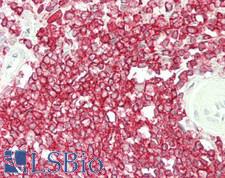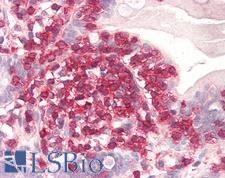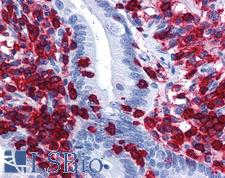Login
Registration enables users to use special features of this website, such as past
order histories, retained contact details for faster checkout, review submissions, and special promotions.
order histories, retained contact details for faster checkout, review submissions, and special promotions.
Forgot password?
Registration enables users to use special features of this website, such as past
order histories, retained contact details for faster checkout, review submissions, and special promotions.
order histories, retained contact details for faster checkout, review submissions, and special promotions.
Quick Order
Products
Antibodies
ELISA and Assay Kits
Research Areas
Infectious Disease
Resources
Purchasing
Reference Material
Contact Us
Location
Corporate Headquarters
Vector Laboratories, Inc.
6737 Mowry Ave
Newark, CA 94560
United States
Telephone Numbers
Customer Service: (800) 227-6666 / (650) 697-3600
Contact Us
Additional Contact Details
Login
Registration enables users to use special features of this website, such as past
order histories, retained contact details for faster checkout, review submissions, and special promotions.
order histories, retained contact details for faster checkout, review submissions, and special promotions.
Forgot password?
Registration enables users to use special features of this website, such as past
order histories, retained contact details for faster checkout, review submissions, and special promotions.
order histories, retained contact details for faster checkout, review submissions, and special promotions.
Quick Order
PathPlusTM CORO1A / Coronin 1a Antibodies
CORO1A is a protein found in macrophages and is involved in phagocytosis, mitochondrial apoptosis and T-cell mediated immunity. It is an important component of the cytoskeleton of highly motile cells, functioning both in the invagination of large pieces of plasma membrane as well as in forming protrusions of the plasma membrane involved in cell locomotion. In mycobacteria-infected cells, its retention on the phagosomal membrane prevents fusion between phagosomes and lysosomes. CORO1A also has important functions in circuit formation in the developing nervous system; it helps to ensure that axons form stable connections and prevents overgrowth by suppressing the sympathetic neuron growth rate. Separately, expression of CORO1A has been found to be negatively associated with age in humans. In immunohistochemistry, CORO1A has highest cytoplasmic positivity in lymphoid tissue, followed by expression in the cerebral cortex, hippocampus and caudate in the brain, as well as limited positivity in the skin and a few other tissues.
References: Aging Cell. 8 (3): 239–50, PMID: 19245677; Biochemistry. 48. pp. 116–23, PMID: 18925376; J Neurosci. 2015 Mar 4; 35(9): 3893–3902, PMID: 25740518
3 PathPlusTM Antibodies



☰ Filters
Products
Antibodies
(3)
Type
Primary
(3)
Target
CORO1A / Coronin 1a
(3)
Reactivity
Human
(3)
Mouse
(1)
Bovine
(1)
Dog
(1)
Horse
(1)
Monkey
(1)
Application
IHC
(3)
IHC-P
(3)
WB
(3)
ELISA
(1)
IP
(1)
Peptide-ELISA
(1)
Host
rabbit
(1)
mouse
(1)
goat
(1)
Product Group
PathPlus Neuro
(3)
Isotype
IgG
(1)
IgG2a,k
(1)
Clonality
monoclonal mc
(1)
polyclonal pc
(2)
Clone
4G10
(1)
Format
Unconjugated
(3)
Epitope
aa250-300
(1)
aa546-558
(1)
Publications
No
(3)

Neuroscience
CORO1A / Coronin 1a Rabbit anti-Human Polyclonal (aa250-300) Antibody
Mouse, Human
IHC, IHC-P, IP, WB
Unconjugated
50 µl/$460

Neuroscience
CORO1A / Coronin 1a Goat anti-Human Polyclonal (aa546-558) Antibody
Dog, Bovine, Horse, Human, Monkey
IHC, IHC-P, Peptide-ELISA, WB
Unconjugated
50 µg/$485

Neuroscience
CORO1A / Coronin 1a Mouse anti-Human Monoclonal (4G10) Antibody
Human
ELISA, IHC, IHC-P, WB
Unconjugated
50 µg/$440
Viewing 1-3
of 3
product results










